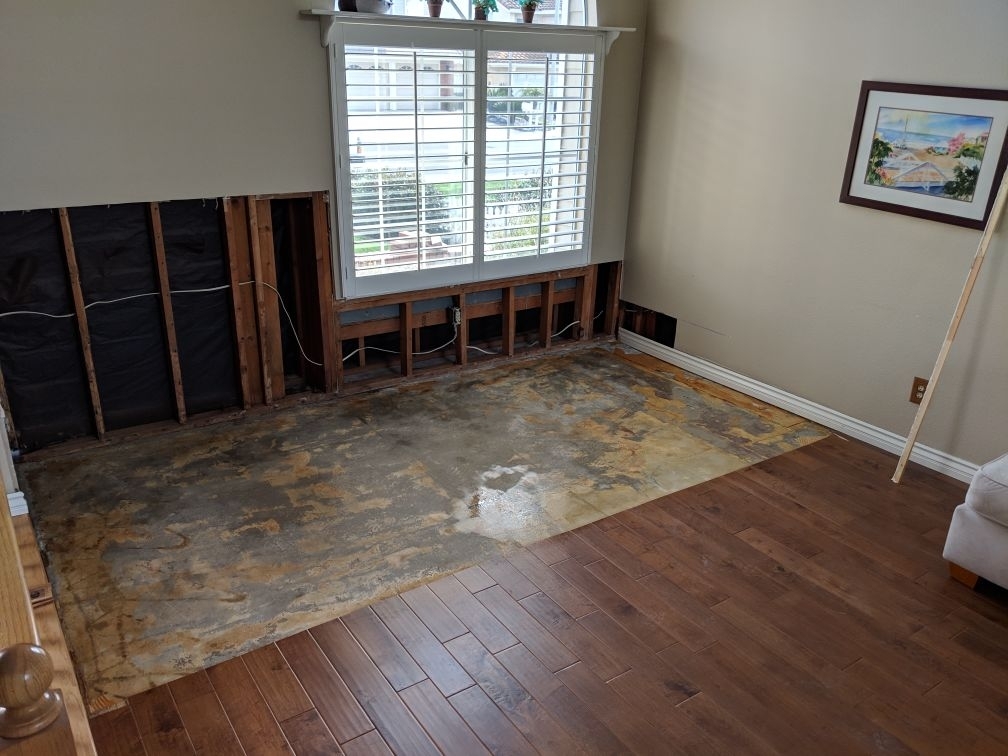Do's & Don'ts of Water Damages.
Do's & Don'ts of Water Damages.
Blog Article
The content listed below involving Simple Solutions To Preventing Fire And Water Damage To Your Home is immensely engaging. Try it and draw your own final thoughts.

Water offers life, water invasion on parts where it's not expected to be can result in damages. It can peel away surface areas and also deteriorate the structure if the water saturates right into your framework. Mold and mildew and also mold additionally grow in a moist atmosphere, which can be dangerous for your health. Homes with water damage scent old and also stuffy.
Water can originate from lots of resources such as tropical cyclones, floods, ruptured pipelines, leakages, and also sewage system problems. In case you experience water damage, it would certainly be good to understand some safety and security precautions. Below are a few guidelines on just how to manage water damage.
Do Prioritize House Insurance Coverage Insurance Coverage
Water damage from flooding because of hefty winds is seasonal. However, you can likewise experience an unexpected flooding when a damaged pipeline suddenly breaks into your residence. It would be best to have house insurance that covers both acts of God such as natural catastrophes, and also emergencies like busted plumbing.
Do Not Forget to Turn Off Utilities
This reduces off power to your whole home, avoiding electric shocks when water comes in as it is a conductor. Do not forget to turn off the major water line valve.
Do Stay Proactive and Heed Weather Condition Alerts
Storm floods can be very unpredictable. Stay ready and proactive if there is a history of flooding in your community. If you live near a river, lake, or creek , listen to evacuation warnings. Get belongings from the first stage as well as cellar, after that put them on the greatest feasible level. Doing so decreases prospective building damages.
Do Not Neglect the Roofing System
You can stay clear of rainfall damage if there are no holes and also leakages in your roofing system. This will protect against water from moving down your walls and also soaking your ceiling.
Do Pay Attention to Tiny Leakages
A ruptured pipeline does not take place over night. You might discover bubbling paint, peeling wallpaper, water streaks, water discolorations, or trickling noises behind the walls. Have your plumbing repaired before it results in enormous damage.
Do Not Panic in Case of a Ruptured Pipe
Maintaining your clearheadedness is important in a time of crisis. Due to the fact that it will suppress you from acting quick, worrying will only worsen the issue. Timing is crucial when it comes to water damage. The longer you wait, the more damages you can anticipate. Thus, if a pipeline bursts in your home, immediately shut down your main water shutoff to cut off the resource. Disconnect all electrical outlets in the location or transform off the circuit breaker for that part of the home. Ultimately, call a trustworthy water damage repair professional for support.
Water provides life, water invasion on components where it's not meant to be can result in damage. Residences with water damages odor musty and old.
Water damage from flooding charges to hefty winds is seasonal. You might observe gurgling paint, peeling wallpaper, water touches, water spots, or dripping noises behind the walls. When it comes to water damages, timing is key.
Some Do's & Don't When Dealing with a Water Damage
DO:
Make sure the water source has been eliminated. Contact a plumber if needed. Turn off circuit breakers supplying electricity to wet areas and unplug any electronics that are on wet carpet or surfaces Remove small furniture items Remove as much excess water as possible by mopping or blotting; Use WHITE towels to blot wet carpeting Wipe water from wooden furniture after removing anything on it Remove and prop up wet upholstery cushions for even drying (check for any bleeding) Pin up curtains or furniture skirts if needed Place aluminum foil, saucers or wood blocks between furniture legs and wet carpet Turn on air conditioning for maximum drying in winter and open windows in the summer Open any drawers and cabinets affected for complete drying but do not force them open Remove any valuable art objects or paintings to a safe, dry place Open any suitcases or luggage that may have been affected to dry, preferably in sunlight Hang any fur or leather goods to dry at room temperature Punch small holes in sagging ceilings to relieve trapped water (don't forget to place pans beneath!); however, if the ceiling is sagging extremely low, stay out of the room and we'll take care of it DO NOT:
Leave wet fabrics in place; dry them as soon as possible Leave books, magazines or any other colored items on wet carpets or floor Use your household vacuum to remove water Use TV's or other electronics/appliances while standing on wet carpets or floors; especially not on wet concrete floors Turn on ceiling fixtures if the ceiling is wet Turn your heat up, unless instructed otherwise

We were made aware of that article about Preventing Fires and Water Damage In Your Home from an acquaintance on another site. Do you know another person who is excited about the niche? Why not share it. Many thanks for your time. Kindly pay a visit to our blog back soon.
Report this page